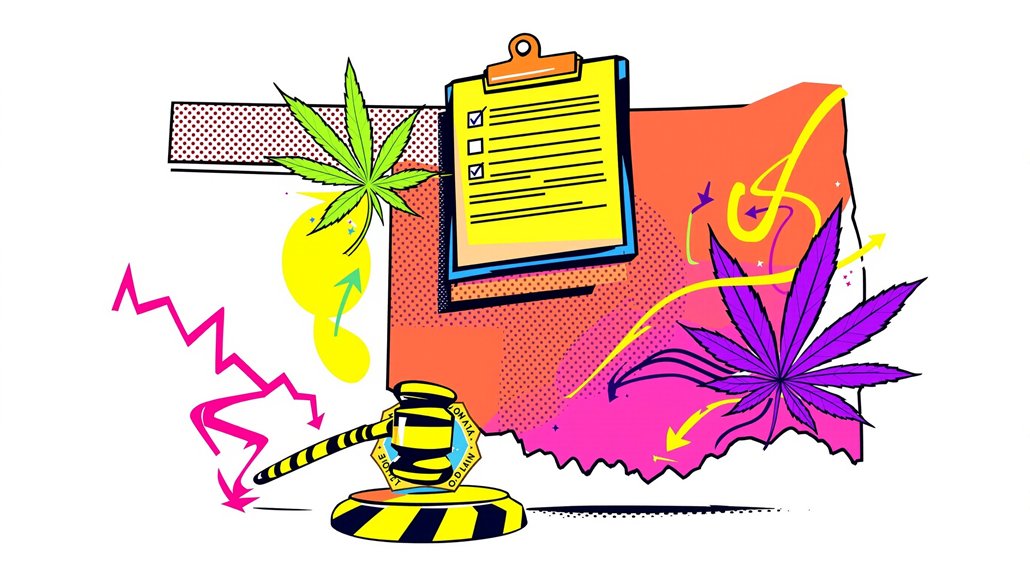Maryland’s cannabis tax revenue hit $18.4 million between April and June, crushing state projections during the 9% tax rate period. The numbers paint a picture of unexpected success—nearly matching the previous quarter’s $17.5 million haul despite fewer collection days. Industry analysts point to stronger-than-anticipated consumer demand and market maturation since legalization launched in July 2023. But these impressive figures raise new questions about ideal tax strategies and what happens when rates inevitably shift.
Since Maryland legalized adult-use cannabis in July 2023, the state’s tax coffers have swelled with green—both the leafy kind and the revenue it generates. The latest quarterly figures show cannabis sales tax revenue hitting $18.4 million from April through June 2025, surpassing the previous quarter’s $17.5 million haul. This performance came during the final months of the 9% tax rate before lawmakers cranked it up to 12% on July 1, 2025.
The numbers tell a story of sustained growth in Maryland’s cannabis market. During its first full year of adult-use sales ending June 2024, the state collected $72.9 million in tax revenue from over $1.1 billion in cannabis sales. That’s serious money flowing through dispensary registers and into state accounts.
That’s serious money flowing through dispensary registers and into state accounts – $72.9 million from over $1.1 billion in cannabis sales.
Geography matters in this green economy. The Central Region, encompassing Baltimore City and surrounding counties including Anne Arundel, Baltimore, Carroll, Harford, and Howard, dominated collections with $8.04 million. The Capital Region followed at $4.12 million, while the Eastern Region contributed $2.38 million. The Southern Region brought up the rear with $913,345. Baltimore’s urban density and surrounding suburban wealth clearly drive the bulk of cannabis commerce.
Revenue allocation follows a methodical approach outlined in the Cannabis Reform Act of 2023. The Maryland Cannabis Administration scooped up $9.79 million to cover operational costs—running a regulated cannabis program isn’t cheap. The Community Reinvestment and Repair Fund received $3.00 million, representing 35% of net revenue earmarked for areas historically hammered by cannabis enforcement.
Local governments, the Cannabis Public Health Fund, and Cannabis Business Assistance Fund each claimed $429,085, or 5% apiece. The remaining 50% flowed into the General Fund. The Maryland Comptroller’s Office released the comprehensive revenue report detailing these distributions.
The social impact extends beyond spreadsheet entries. Maryland has pardoned more than 175,000 marijuana convictions, including 150,000 misdemeanors, attempting to repair communities damaged by decades of prohibition. The state opened a 2024 licensing round exclusively for social equity applicants, expanding opportunities for minority and women-owned businesses in the rapidly growing industry.
Market maturity shows in consistent quarterly increases since launch. Industry improvements in licensing, reporting, and enforcement have contributed to robust revenue growth that consistently exceeds projections. High sales volume continues driving performance, with future annual collections expected to surpass $100 million thanks to the July tax rate bump and ongoing industry expansion.
The health data presents mixed signals. Youth cannabis use has declined slightly since legalization, but emergency departments report increased cannabis-related visits among adults aged 20-29. Additionally, Maryland hospitals have documented a rise in cases of cannabis hyperemesis syndrome, a condition characterized by cyclic vomiting, stomach pain, and severe nausea. Such trends require ongoing monitoring as the market matures.
Maryland’s cannabis experiment demonstrates how regulated markets can generate substantial tax revenue while addressing social justice concerns. The state’s methodical approach to revenue allocation guarantees funds support community reinvestment, public health, and business development rather than simply padding general coffers.










